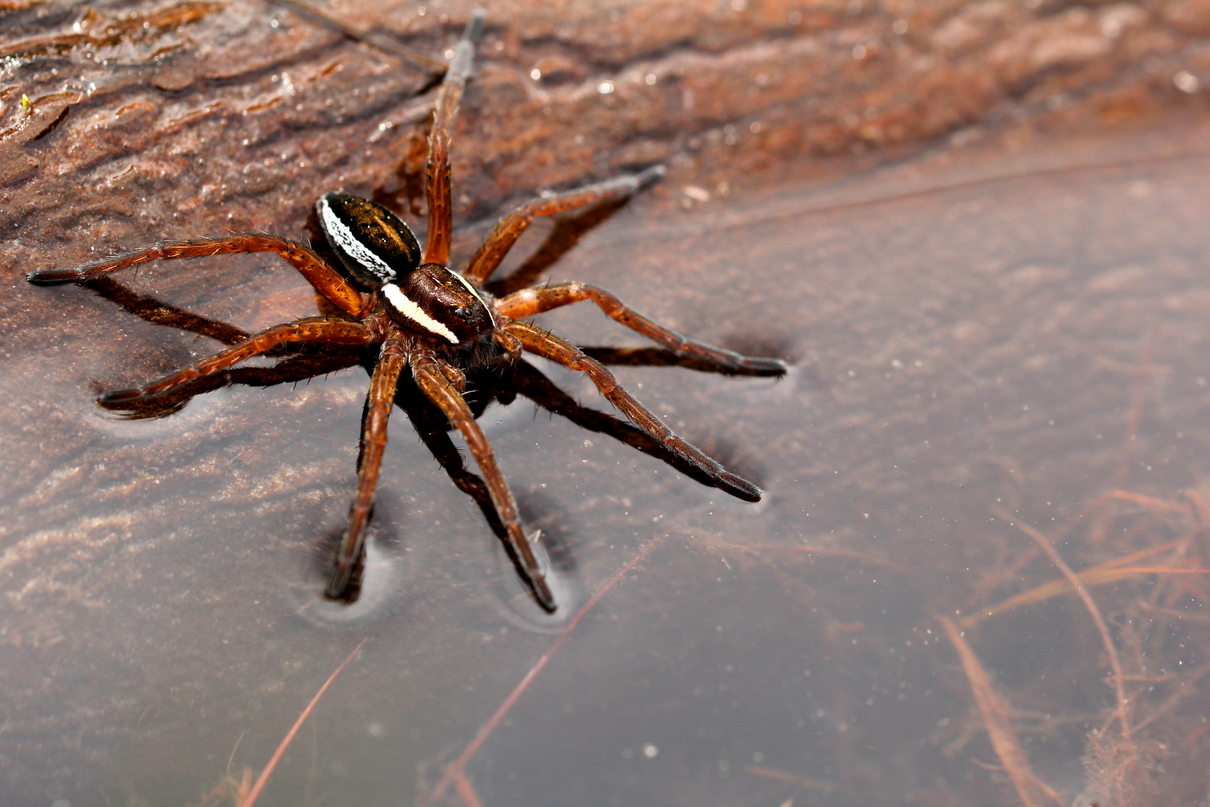Ten years ago, an ambitious conservation project began releasing thousands of “giant” spiders into European wetlands. These were not just any spiders, but the “Dolomedes plantarius”, a semiaquatic species that can exceed the size of a hand’s palm and can move on water as if it were floating.
What was once a desperate attempt to save a critically endangered species is now a successful example of ecosystem restoration. However, for those who suffer from arachnophobia, this news could become a nightmare.
The giant spider that walks on water
The “Dolomedes plantarius,” commonly known as the fen raft spider or nursery web spider, is a unique species.
Recognizable by its chocolate-brown body with cream stripes on the sides, this spider is not only large (it can reach 7 cm excluding the legs), but it has a remarkable ability: it walks and hunts on water. It uses its long legs to move on the surface and catch small aquatic prey such as insects, tadpoles, and even small fish.
Fifteen years ago, this species was on the brink of extinction due to the destruction of its natural habitat, the wetlands. The drainage of these spaces for agriculture or urbanization had drastically reduced their chances of survival.
A plan that changed the species’ fate
To reverse its decline, a team of researchers from Chester Zoo in the UK and the Royal Society for the Protection of Birds (RSPB) designed an innovative conservation program.
They bred thousands of young spiders in captivity, manually feeding them with small flies until they reached a suitable size to be released into restored wetlands. This process not only helped repopulate their former territories but also restored ecological balance in many areas.
Today, the UK has an estimated population of 10,000 breeding females, according to the most recent data from the RSPB. This success has inspired similar projects in other European countries, such as France, where small populations have been documented in regions like Nord-Pas-de-Calais, Picardy, and Normandy.

Are they really a threat?
Although the increase in these spiders may be intimidating for many, their role in ecosystems is crucial. The “Dolomedes plantarius” helps regulate populations of aquatic insects and maintains balance in wet environments. Furthermore, their presence is an indicator of the good health of wetlands, vital ecosystems for biodiversity and the fight against climate change.
However, experts assure that there is no reason to be alarmed. These spiders do not pose a danger to humans, as they are shy and avoid contact with people. Additionally, it is unlikely to find them outside their natural habitat.
A model for conservation in Europe
The case of the “Dolomedes plantarius” is a clear example of how active conservation can make a difference. Wetland restoration, combined with the reintroduction of key species, not only benefits local biodiversity but also has a positive impact on human quality of life.
The question now is whether other European countries will follow the UK’s example and prioritize the protection of their wetlands and native species. The success of this giant spider reminds us that, even in the most challenging scenarios, it is possible to reverse the damage caused by humans to the environment.
Cover photo: Shutterstock
Have you visited our YouTube channel yet? Subscribe!

